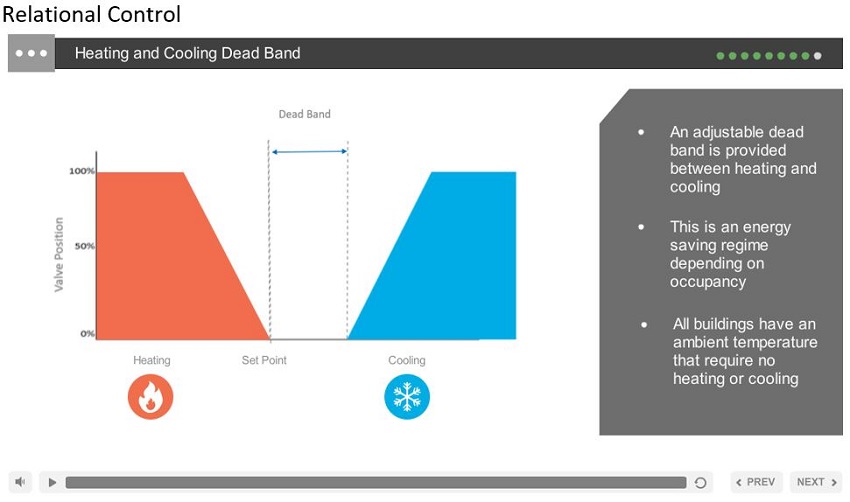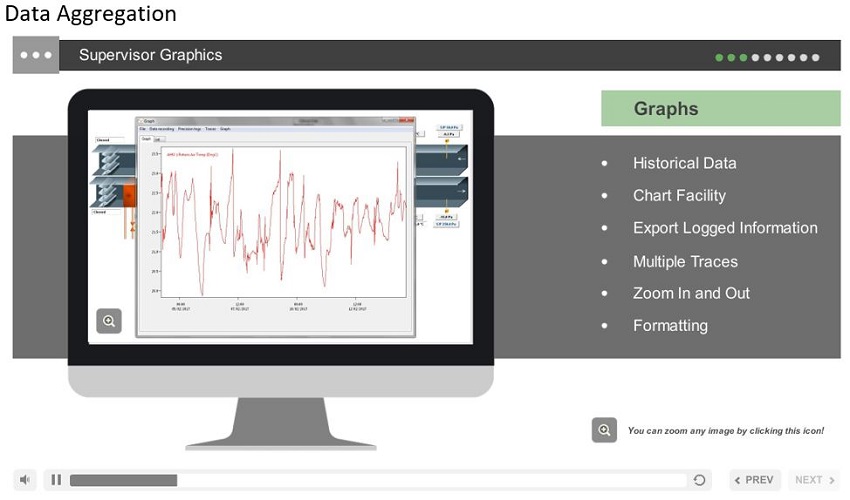|
June 2017
AutomatedBuildings.com
|
[an error occurred while processing this directive]
(Click
Message to Learn More)
|
Filling the BeMS Training Gap
Companies
who truly understand the systems they have installed and their
relationships are able to make best of use their Building energy
Management System and help them achieve their objectives of saving
energy and reducing carbon emissions.
|

Steve
Harrison
Technical Director
Optimised
Learning
|
The
old saying “rubbish in means rubbish out” is probably relevant today
more than ever.
Generally, most Building energy Management
System operators are aware that they have intelligent building controls
installed on their heating and ventilation equipment, and there will be
a good level of knowledge to manage this.
But what operators often don’t appreciate
is the huge benefit controls can bring to reduce the long-term running
costs of their building with very little capital expenditure.
Using what we already have in place, and
understanding the relationship between devices sometimes operating
independently in the same system means we can ensure there is good
“Relational Control” between different manufacturers products. Users
who deploy this strategy will be seeing an immediate impact on energy
reduction and higher long-term energy saving.
First, what are the rewards?
To understand this better, we need to go
back to some basic facts. There is a growing realisation that most of
the costs regarding the life cycle of a commercial building are running
and maintaining it. In fact, over the whole lifecycle of the building,
the figures are approximately 25% for the design and construction of
the building and 75% for the operation and maintenance.
Let’s take the initial design and
construction, of this just ten per cent of the entire lifetime costs of
a building are made up of its construction. And yet, it is here in this
small margin that contractors attempt to squeeze budgets hardest. This
leads to control systems that are either incompatible or will not
communicate with the Building energy Management System. That means even
at hand over the building may not have a cohesive energy management
strategy.
Of the remaining 75%, it is safe to say
that much of the costs are related to building services – heating,
ventilating, air conditioning, and lighting. It is only through good
building controls that these costs can be managed effectively. By
understanding the relationship between incompatible systems, the
Facility Manager can directly influence the performance of a company’s
profit and loss. This is not only by saving energy in the building but
also because of the relationship the built environment has to
productivity.
One of the most efficient ways to improve
the quality of the environment we work in is by understanding how we
control it. To do this, we need to understand “Relational Control.”
How to understand “Relational
Control” in Building Services
The rise in demand for controls and
intelligent equipment presents the building services industry with a
massive integration challenge; to maximise the value from today’s
controls, systems must communicate with each other effectively.
The controls sector is going through a
change right now, and a shift toward the efficiency of factory fitted
controls with “open” protocols and multi-vendor networks. This means
there is growing pressure on end users to understand the minefield of
communication compatibility. This is not straight forward even for
“compatible systems,” but the rewards of integration are huge.
Open protocols can seem confusing, but
operators need to be aware of the main contenders such as BACnet,
LonWorks, Modbus, and KNX. Using open protocols makes it much easier to
build up a relationship between smart equipment, and the BeMS.
A recognised and approved controls company
can very quickly ascertain if you have good “Relational Control,” or
two systems competing against each other. In its simplest terms, one
system could be in free cooling mode bringing in cold air from outside,
whilst another system is calling for heat. If we build a relationship
between systems, there is less chance of this happening. This is what
we call “Relational Control.”

What are the latest BeMS
innovations to enable Relational Control?
Building controls are technically a
fast-moving sector, and manufacturers are investing in new technologies
all the time. We are now seeing more cloud-based data storage; this is
an enabler to “Relational Control.”
The data is normalised and held centrally;
this means the capability of front-end software of BeMS is also
developing, bespoke dashboards allow us to build user interfaces that
help us create an efficient energy strategy. It also means end-users
can access information on building performance from different systems
and assemble it in one place.
The emergence of factory fitted controls,
smart pumps, fans, chillers and even sensors with cloud access means
that better basic understanding of this technology by end users is
needed, this will help them to specify holistic systems and identify
what is available now and in the future.
Looming Legislation!
Energy Savings Opportunities Scheme should
encourage companies to take note of what they can do to save money;
this should lead to more awareness about how cost effective building
controls are when it comes to saving energy.
The more significant step forward for the
controls industry was the recognition in the new Part L 2013 Compliance
Guide of BS EN15232 which offers a methodology for grading Building
energy Management Systems.
It is a good time for large commercial
property managers to review their building stock to see how “Relational
Control” can be improved. Thanks to BS EN 15232, the math’s can now be
easily done to highlight inefficiency.
From April 2018, a new legal standard for
minimum energy efficiency will apply to rented commercial buildings.
This means that it will be unlawful to let commercial buildings with an
energy performance rating of F or G.
Large commercial property managers are
already reviewing their building stock to see how energy performance
can be improved – and effective building controls and building controls
training can play an important part in that process.
Optimised Learning means Optimised
Buildings
The controls industry has always prided
itself on raising standards and professionalism, manufacturers of
control systems supply end user training on their own brand of Building
energy Management System. This is manufacturer specific and is
completely fit for purpose.
[an error occurred while processing this directive]But as discussed earlier, buildings are
often delivered with many different manufacturers controls that need a
good “Relational Control” strategy.
This is simply explained in plain English
by Optimised Learning’s eLearning modules on ‘Understanding BeMS’,
these modules cover many of the roadblocks discussed in this article
and give End Users and Facility Managers a much better understanding of
a holistic energy strategy.
There are four basic courses; the first is
an outline of a BeMS, the second covers cooling, the third, heating and
finally air conditioning. All are at a basic level that allows the
student to gather some of the vernacular used by controls engineers and
gives real tips and hints on how to save energy. There is also an end
test, a multiple-choice questionnaire to ensure the message has been
delivered.
Companies who truly understand the systems
they have installed and their relationships are able to make best of
use their Building energy Management System and help them achieve their
objectives of saving energy and reducing carbon emissions.
About
the Author
Steve Harrison, Immediate Past President of the Building
Control Industry Association has been 28 years in the control industry
and is the Technical Director of Optimised Learning.
https://www.optimisedlearning.com/bems-1

footer
[an error occurred while processing this directive]
[Click Banner To Learn More]
[Home Page] [The
Automator] [About] [Subscribe
] [Contact
Us]